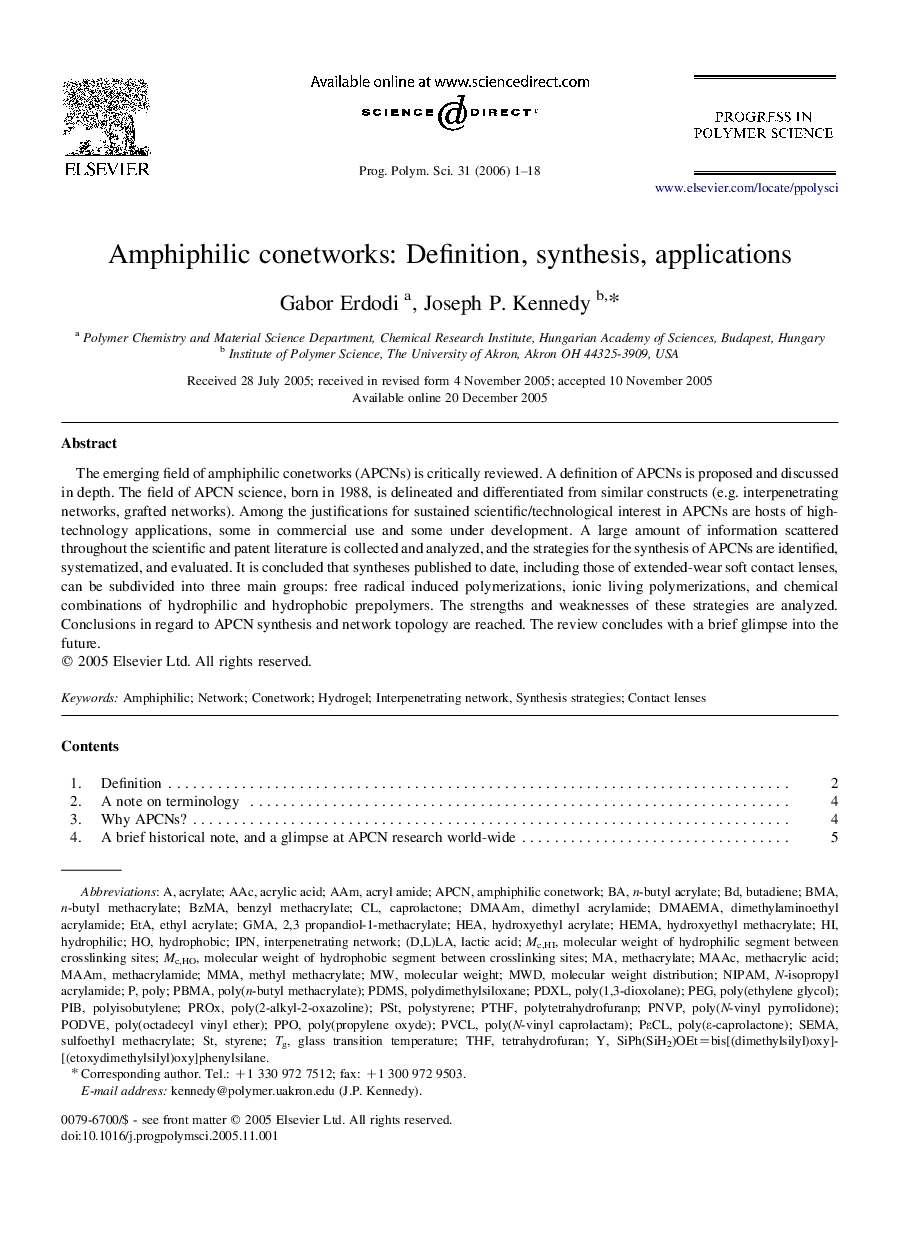| Article ID | Journal | Published Year | Pages | File Type |
|---|---|---|---|---|
| 5209166 | Progress in Polymer Science | 2006 | 18 Pages |
Abstract
The emerging field of amphiphilic conetworks (APCNs) is critically reviewed. A definition of APCNs is proposed and discussed in depth. The field of APCN science, born in 1988, is delineated and differentiated from similar constructs (e.g. interpenetrating networks, grafted networks). Among the justifications for sustained scientific/technological interest in APCNs are hosts of high-technology applications, some in commercial use and some under development. A large amount of information scattered throughout the scientific and patent literature is collected and analyzed, and the strategies for the synthesis of APCNs are identified, systematized, and evaluated. It is concluded that syntheses published to date, including those of extended-wear soft contact lenses, can be subdivided into three main groups: free radical induced polymerizations, ionic living polymerizations, and chemical combinations of hydrophilic and hydrophobic prepolymers. The strengths and weaknesses of these strategies are analyzed. Conclusions in regard to APCN synthesis and network topology are reached. The review concludes with a brief glimpse into the future.
Keywords
GMAPBMAPROXMWDPPOAACMMAPSTIPNConetworkBMAAAMBzMAPiBETAn-butyl methacrylateDMAEMAn-Butyl acrylatePolyisobutylenePVCLMAAcPNVPPDMSPTHFHydroxyethyl acrylatePoly(N-vinyl caprolactam)THFN-Isopropyl acrylamideHydrophobicSemaAmphiphilicEthyl acrylateStyreneLactic acidMethacrylic acidAcryl amideAcrylateAcrylic acidbenzyl methacrylateButadieneTetrahydrofuranMolecular weight distributionglass transition temperatureHEAnetworkInterpenetrating networkcontact lensesHydrophilicMethacrylamideMethacrylateMMA, Methyl methacrylateNIPAMHEMAHydrogelHydroxyethyl methacrylateMolecular weightpolyPoly(n-butyl methacrylate)Poly(N-vinyl pyrrolidone)Poly(ε-caprolactone)Poly(ethylene glycol)PEGPolystyrenePolydimethylsiloxaneCaprolactone
Related Topics
Physical Sciences and Engineering
Chemistry
Organic Chemistry
Authors
Gabor Erdodi, Joseph P. Kennedy,
